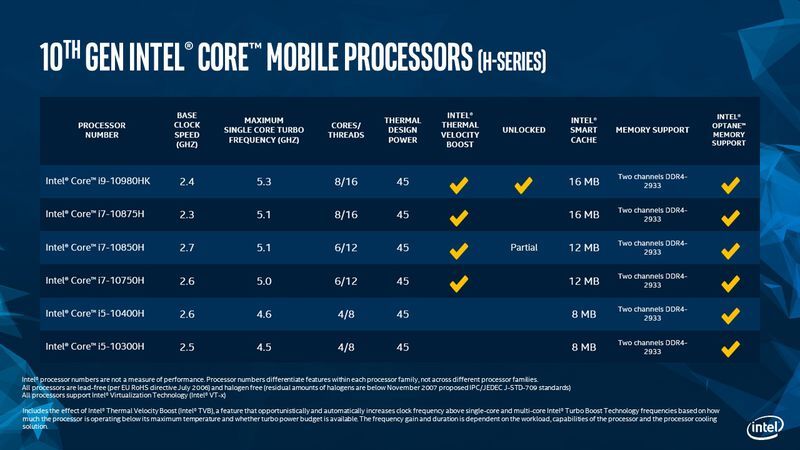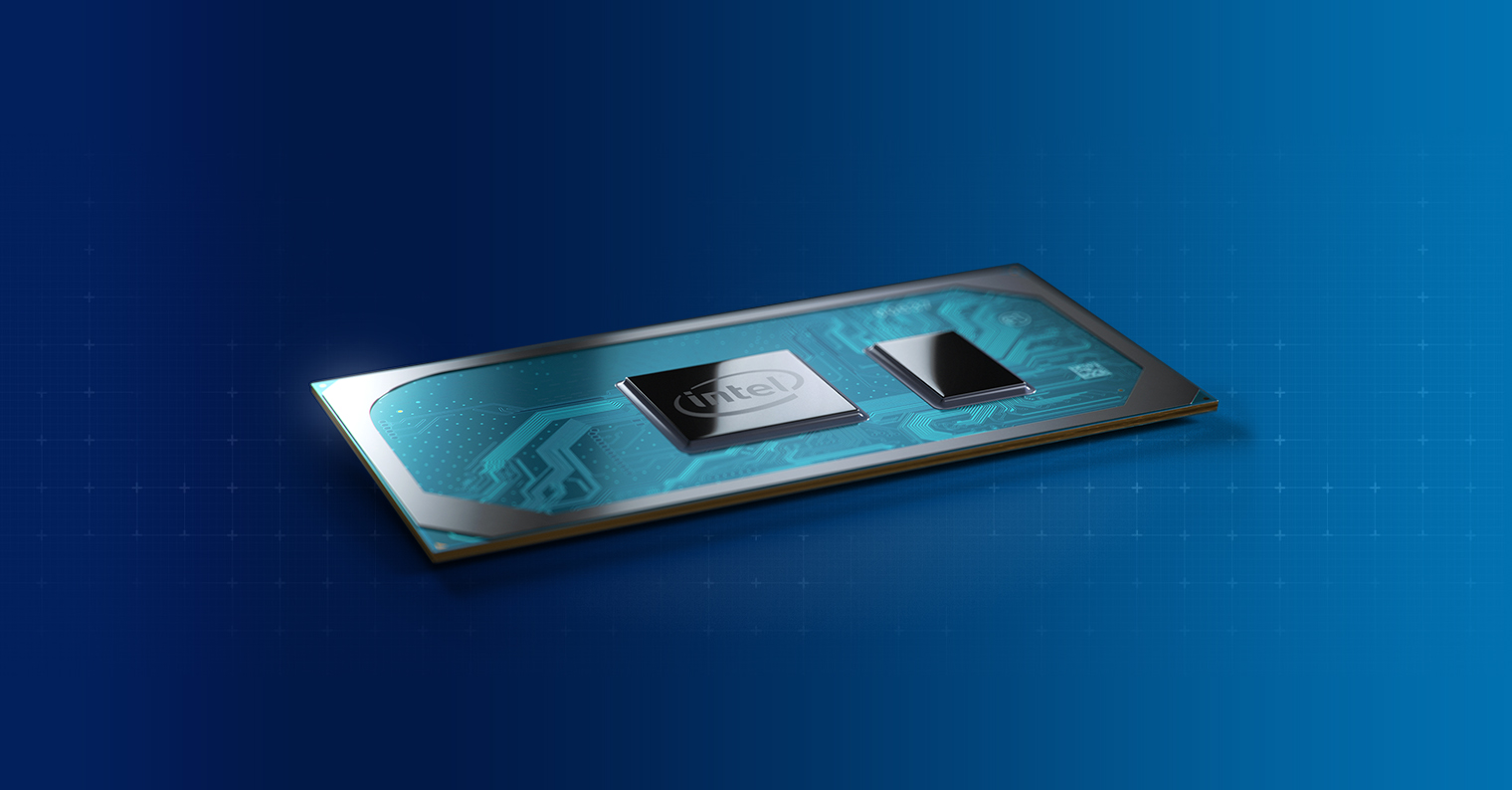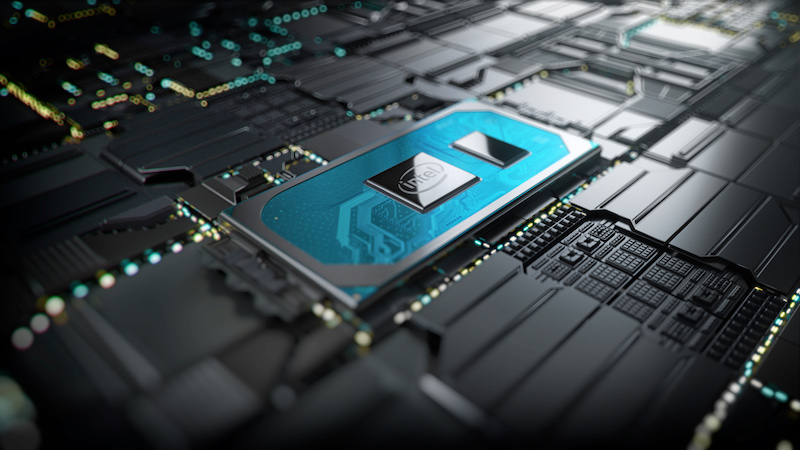AMD introduced a new generation of its mobile CPU/APU a few days ago, and judging by the reactions and reviews on the web so far, it looks like it has wiped Intel's eye (again). So it was expected that Intel would not be too late with the answer, and so it happened. Today, the company introduced new powerful mobile processors based on the 10th generation of its Core architecture, which will practically 100% appear in the next revision of the 16″ MacBook Pro, as well as in the revision of the 13″ (or 14″?) variant.
It could be interest you

Today's news presents the H series of chips from the Comet Lake family, which are manufactured using the 14 nm ++ manufacturing process. These are processors with a maximum TDP of 45 W, and you can view their complete overview in the official table in the gallery below. The new processors will offer the same core clocks as the current, 9th generation Core chips. The news differs primarily in the level of the maximum Turbo Boost clock, where the 5 GHz limit has now been exceeded, which is the first time in terms of official specifications for mobile chips. The most powerful processor on offer, the Intel Core i9-10980HK, should achieve maximum clock speeds in single-threaded tasks up to 5.3 GHz. However, as we know Intel, the processors do not reach these values just like that, and if they do, then only for a very short time, because they start to overheat and lose their performance.
Intel refers to the processor mentioned above as the most powerful mobile processor ever. However, table values are one thing, functioning in practice is another. Moreover, if only the values of the maximum clocks under very specific conditions have improved between generations, it is not a significant improvement in general. In addition to clocks, the new processors also support Wi-Fi 6. It is expected that in terms of hardware, they should be almost identical chips, very similar to the previous generation. It can therefore be expected that these processors (in slightly modified variants) will appear both in the upcoming 13″ (or 14″?) MacBook Pro, as well as in its 16″ variant, which received the last hardware update in the fall. We will probably have to wait until the end of the year for the next one.




By the way, the tenth generation of processors from Intel is also found in the new MacBook Air.
The thing with these new CPUs is not so famous in terms of frequency, etc., because at full boost the processor says up to 135W and it only goes like that for a short time, then it goes back to PL1. It's just that Intel doesn't know where to go and is trying to throw at least something on the market. It's sad how AMD got away with it. It's really a spreadsheet.
If I don't understand it at all, I don't write about it, or I find out some facts first. Intel didn't release any competition, it just updated the old advice and made a minimum of changes. The fact that an Intel CPU consumes almost twice as much as the same performance of an AMD CPU today, which is extremely important for ntb, that a laptop can be 14" and 2 kg and has an 8-core/16-thread CPU from AMD, and if you would like similar performance from Intel , then the ntb will be twice as thick and harder to cool it down, because Intel TDP and real TDP are two completely different things, but the writer would have to follow that and not just make articles and pretend to understand it. I say it again, the quality of the "editor" is down right here. Probably as if new reinforcements arrived from lightning and thunder, etc...
Unfortunately, we have to stick to the official specifications. It is clear that Intel's TDP is higher than it states and than, for example, processors from AMD have. We all follow the events surrounding Apple, and the fact that the quality of the editors has gone down terribly is nonsense, because the same people have been writing here for several years. Anyway, thanks for your opinion.
So why don't you write the complete specification instead of the misleading 45W? How about adding that 45 W is at the base clock, then according to the official parameters (not the marketing slide) you could also add that with a turbo on one XY GHz core, the TDP is so much and so much, that with multi core boost it is so much, etc... Alternatively, it would be just as well to write that the maximum boost is maintained for 0,5 seconds before it starts throttling... Just so the reader doesn't know, he didn't mistakenly think that this "new" generation is any good or competitive.
As for quality, I've never really thought about what anyone writes, and in recent months I've always asked myself what kind of nonsense it is, and it's always signed by Mr. Hanak or Amaya. Quality as from medium without knowledge, just des.
It's OK with you Mr. Jelic ;-)